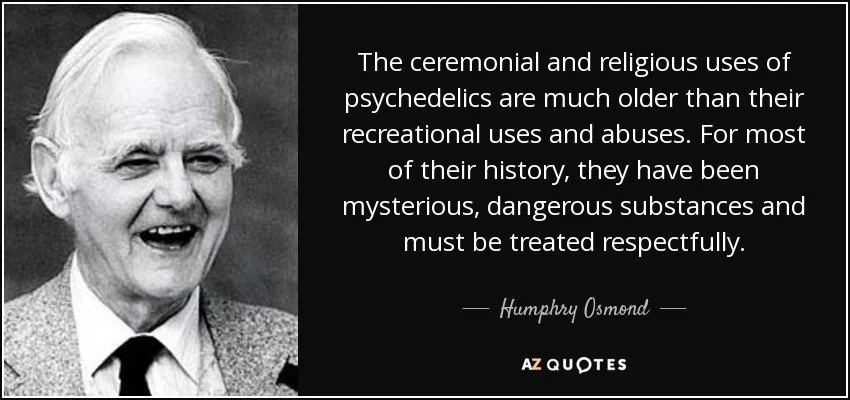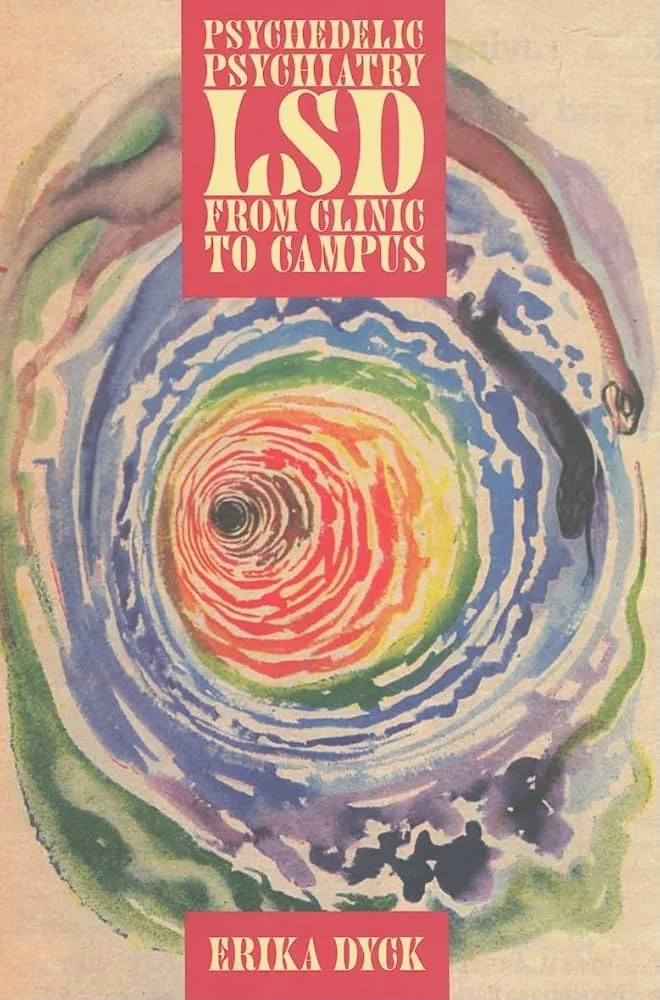Why are we moving to Saskatoon?
Why are we moving to Saskatoon, Saskatchewan? Saskatchewan called the land of living skies, was one of the birthplaces for the academic study of psychedelics. Humphry Osmond, a Saskatchewan-based psychiatrist, is the man who coined the term psychedelic in 1957! Guided therapy sessions with both LSD and Mescaline (derived from the Peyote cactus) were conducted on Canadian soil, when the evolving thought process around these novel mental health agents began. From the very beginning, promise was shown with a new potential treatment for addiction, autism, and a range of other mental health functions. These tests were occurring 14 years after the first human ingestion of LSD on April 19th by Albert Hoffman the Swiss chemist in 1943. Humphry Osmond was born in Britain, but arrived in North America in 1951. Osmond worked in an overcrowded mental asylum called the Weyburn Saskatchewan Mental Hospital. This was one of the largest mental hospitals in North America. The outside landscape was pristinely manicured, but inside, patients suffered steadily due to lack of adequate care and through the implementation of novel psychoactive substances and other various forms of treatment deemed less than credible by modern standards. Osmond met another psychiatrist and biochemist named Abraham Hoffer in the early 1950’s. The two developed a long-distance working relationship. Osmond is the guy who famously theorized that LSD could be used to mimic and study the effects of schizophrenia. His vision was that this would enable psychiatrists to better understand the behavior and feelings of their patients and, in turn, lead to better treatment in asylum settings. The second goal of the group was to research the potential for treatment for alcoholism. The goal would be to give alcoholics an introspective journey before they hit “rock bottom,” the historic first step for alcoholics to achieve sobriety. The pair had quite literally been envisioning a Brave New World as they had been taking LSD and Mescaline with their wives together learning the innerworkings of each medicine. In 1953, Osmond befriended the infinitely more popular in modern culture Aldous Huxley, who wrote the Doors of Perception in the same year 1953 about a Mescaline trip. This book would go on to inspire Jim Morrison to name his 1965 Los Angeles band The Doors. “To fathom Hell or go angelic/ Just take a pinch of PSYCHEDELIC” were the first words paired with the new moniker of psychedelic, forever linking the substance with a broad spectrum of interpreted experiences. In 1957, after Osmond presented the word in a medical paper, it officially entered English dictionaries. In 1961, Osmond moved to the United States to reform another problematic mental hospital, and by 1962, the political turmoil around LSD in Canada began to slow research. There were birth defects found in children born after the use of Thalidomide, and the Canadian government began to reevaluate what drugs were being researched. In 1962, LSD was still being researched in Saskatchewan, with Premier Tommy Douglas offering research grants to attract individuals to the province. By this time, LSD had already slowly begun to inch into a black market underground world that would burgeon by 1964 and hit a fever pitch in 1966 and 1967. The drug was officially placed on the United States banned substance list in 1968, the same year the drug was being linked to antiwar activities.
Dr. Erika Dyck wrote Psychedelic Psychiatry: LSD from Clinic to Campus in 2008. She was one of the first academic researchers in the history space to engage with the topic of psychedelics. This is why we are moving to Saskatchewan. So that I can work with a pioneer, but according to a recent podcast, she doesn’t see herself as one. Dr. Dyck has written a number of books on the topic of psychedelics since 2008. Most recently, she was a part of two collections of writings cultivated with other thought leaders in the psychedelic space: Expanding Mindscapes: A Global History of Psychedelics & Women and Psychedelics: Uncovering Invisible Voices. Both of these volumes have been released within the past year.
Hear Dr. Dyck’s latest podcast below.
https://psychedelicstoday.com/2024/06/28/women-and-psychedelics-historys-untold-stories/
In the fall of 2022, I published my Master’s Thesis, From Scandalized Experiments to Standardized Therapy: MDMA and Race in Modern America. After finalizing this project, in the spring of 2023, I began a year-long journey into the mindset of a psychedelic facilitator. I was instructed by leaders in the space around the world including Dr. Erika Dyck. In the summer of 2023, I went to Psychedelic Science 2023 in Denver, the MAPS conference, to meet members of Vital that I was learning with online in person. The momentum was real and most in attendance felt that if this many people were together for the cause, surely MDMA would become an FDA regulated treatment. This was a very exciting time for me where I witnessed Dr. Erika Dyck speaking about the historical role of psychedelics on a panel with psychology, and sociology experts. This spurred my desire to get to Canada, and it is with the utmost excitement that we make this move to Saskatchewan, Canada, a country that is more open to the research I am interested in conducting. Emily and I bonded early on over our fascination surrounding alternative mental health treatments and the failures of governments to embrace these already time-tested medicines. Emily & I plan to in the future offer retreats in Canada and around the world that allow participants to experience the wonders of alternative modalities of healing. We are excited to embark on this next chapter as we explore a new country and a new way of life. Stay tuned for updates. Are you interested in learning more or do you have a specific question for us? Email us @ Hamptonparkhealingco@gmail.com
With Peace and Love
Will


